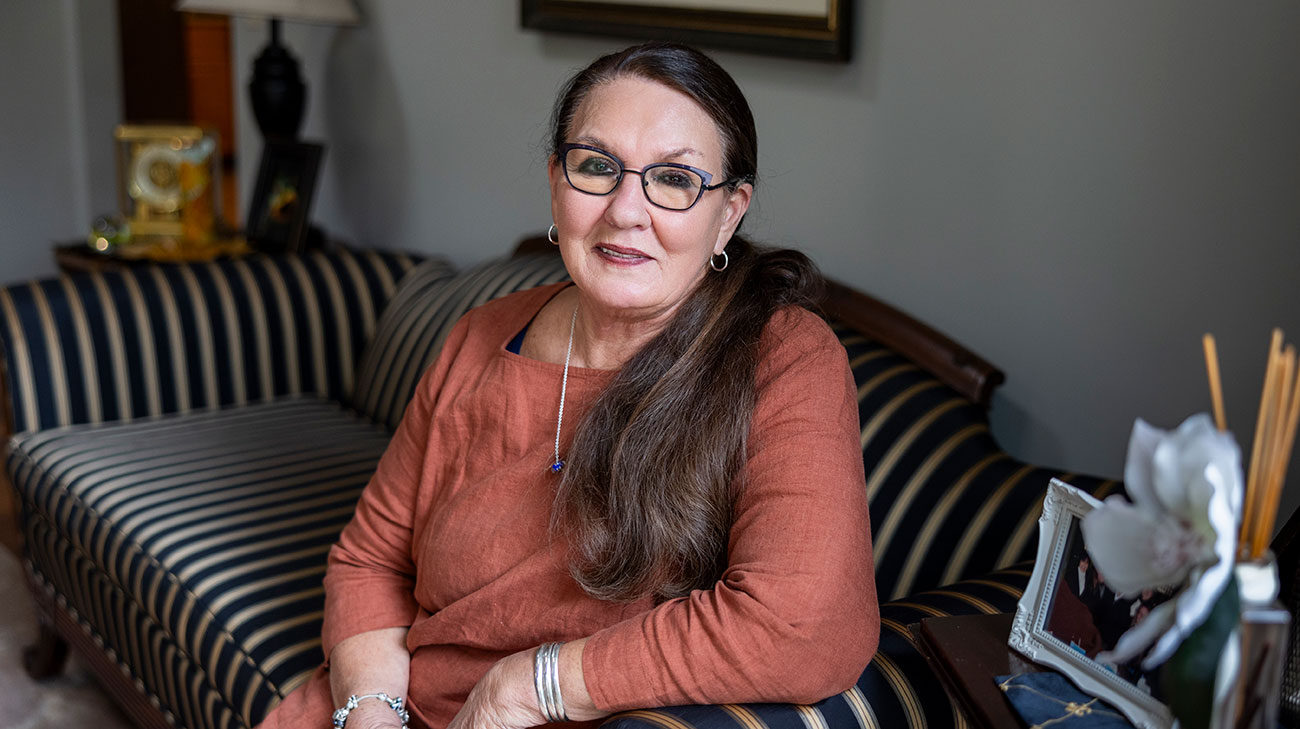
Cheryl Cannatti, age 70, recalls having hearing issues as far back as third grade. Her hearing got worse over the years because of other health issues. She was diagnosed with bilateral hearing loss, meaning both ears are affected.
When an aunt mentioned learning about a new program for those with hearing issues, Cheryl looked into it. She wasn’t a candidate for that program — it was for people with hearing loss in one ear only — but the doctor asked if she had ever considered a cochlear implant.
“I didn’t think I was a candidate, but she told me I was,” says Cheryl, who immediately said yes. “We started the process, then COVID came along so things were held back.”
Hearing loss had impacted every aspect of Cheryl’s life. She became isolated from friends and family, which led to depression and anxiety. The pandemic made things worse, with masks taking away her ability to read lips.
In November 2021, Cheryl had her first appointment with Sarah Sydlowski, AuD, PhD, MBA, Audiology Director of the Hearing Implant Program at Cleveland Clinic.
“Cheryl was a perfect candidate for a cochlear implant, because she still had some of her natural hearing — she just wasn’t hearing as well as she wanted to,” says Dr. Sydlowski. “When first introduced about 40 years ago, cochlear implants were used only as a last resort for people with profound hearing loss. But over the years, we’ve learned that the earlier we identify candidates and move ahead with an implant while they still have natural hearing, the better they do.”
Dr. Sydlowski further explains that only about 2% of people who could benefit from a cochlear implant have one. “Many people, even providers who refer patients to us, think of a cochlear implant as the last thing to try. Because of this, they often end up avoiding an option that can really help. It is a life-changing technology that many people are missing out on,” she says.
Unlike hearing aids, which make sound louder but not necessarily clearer for those with more advanced hearing loss, a cochlear implant is surgically implanted inside the ear. When the sensory cells in our ears move as they should, they send sound to the hearing nerve, which travels up to the brain. If the sensory cells aren’t working well, hearing loss occurs. The cochlear implant includes an array of electrodes that effectively take the place of the sensory cells, often providing more sound clarity than a hearing aid because they send the sound directly to the hearing nerve.
“When we can use a hearing aid, we do. But if the individual needs more, it’s best not to wait until none of those sensory cells work. While there is a risk that the implant can damage those cells and some natural hearing can be lost, techniques that have improved over the years make it easier to insert the array of electrodes without causing damage,” says Mark Bassim, MD, who performs complicated ear surgeries and serves as Medical Director of the Hearing Implant Program at Cleveland Clinic. “We don’t recommend a cochlear implant until we expect the benefit will outweigh the benefit of using a hearing aid.”
To determine if a patient is a candidate for a cochlear implant, the audiologist measures how well the patient is able to understand speech when wearing a well-fit, appropriate hearing aid. This helps to determine which hearing device will be the most effective.
“When she knew the context of words or sentences and was listening in a quiet room, Cheryl could understand about 65% of what was being said. Without context, and with any background noise, she understood less than half. That’s typical of a good candidate for a cochlear implant and it’s why trying to function with hearing aids can be really tiring,” says Dr. Sydlowski. “Because her hearing was different in both ears, she would do better with an implant in her left ear — which didn’t hear quite as well — and a hearing aid in the other.”
Cochlear implant surgery takes about two hours with the patient under general anesthesia. They typically go home the same day.
In Cheryl’s case, her natural hearing was not initially damaged by the placement of the implant, so she was able to use what is called “electric-acoustic stimulation” – essentially a combination of a hearing aid and a cochlear implant in her left ear and a hearing aid in her right, leading to a maximization of her natural hearing in both ears and improvement in her overall hearing.
“The surgery was easy; I had no issues or problems. I went back about a month later to get the implant activated,” says Cheryl. “My husband and I practiced day and night. At dinner, he would talk, and I would close my eyes, then repeat what he said. You forget how to hear, so I had to retrain my brain.”
She experienced improvement almost daily, understanding 80% of words after just one month. After a couple of months, a new hearing aid was added to Cheryl’s right ear. Today, in a quiet setting, she gets almost 100%.
“I remember thinking after the first couple of months, if this is as good as it gets, I’m thrilled. But it’s continued to get better. I can hear my grandchildren’s voices, I can listen to music, talk on the phone, chat with friends in person,” says Cheryl. “This is the best thing that ever happened to me. I’m blessed and thankful to be living a normal, enjoyable life.”
Related Institutes: Head & Neck Institute

